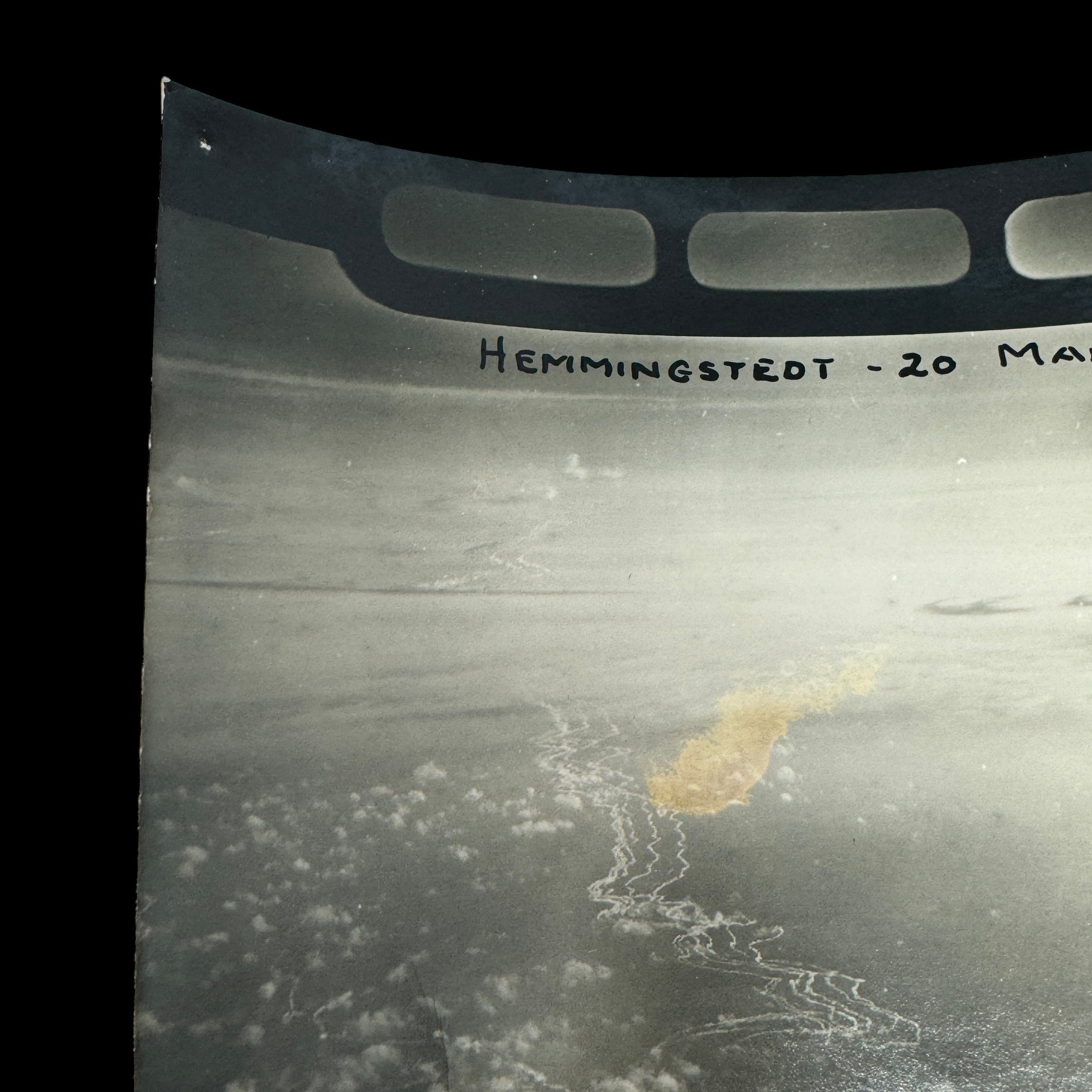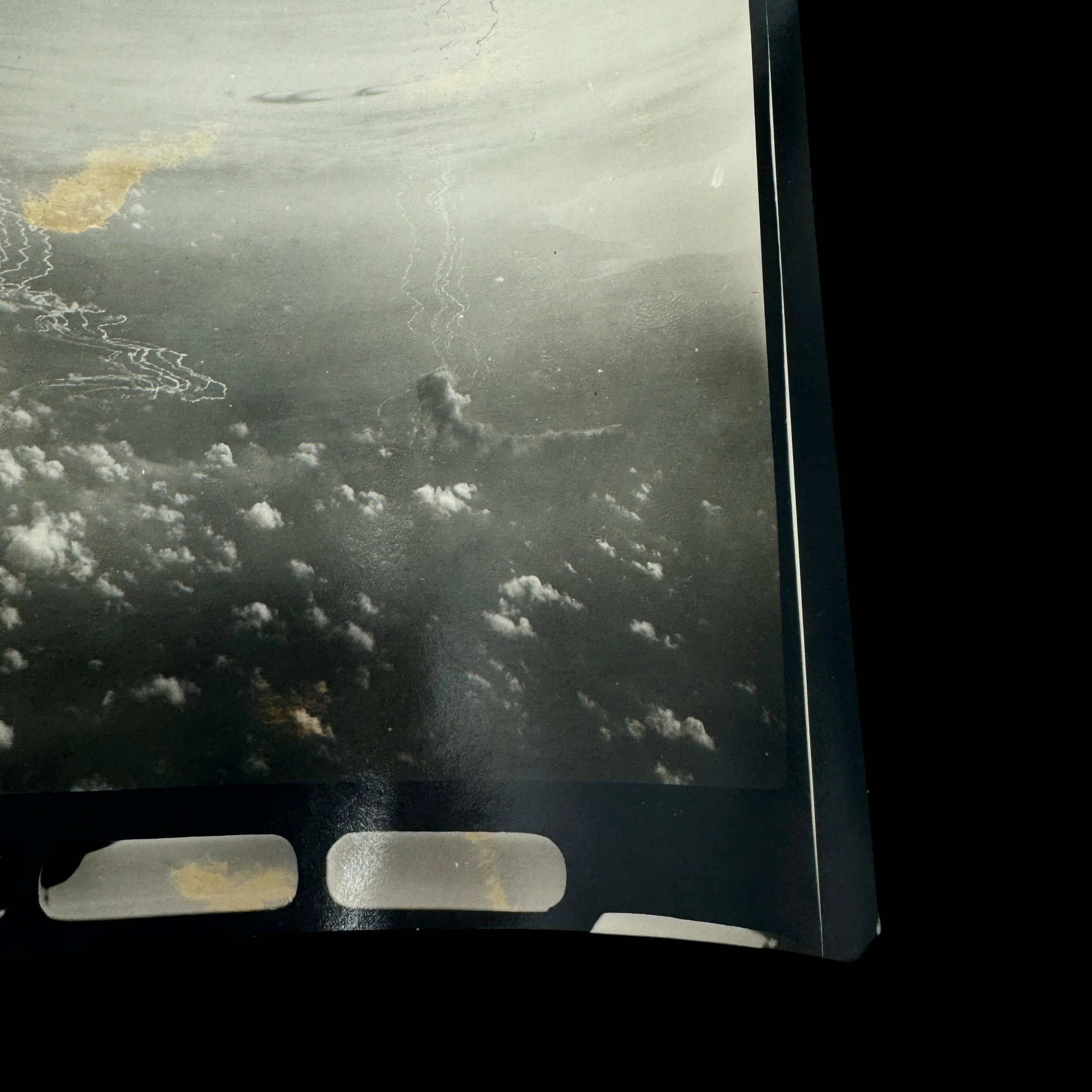RARE! WWII 392nd Bomb Group 8th Air Force March 20th, 1945 "Mission #263 - Hemmingstedt, Germany" Type 1 Aerial Combat Mission Photograph*








RARE! WWII 392nd Bomb Group 8th Air Force March 20th, 1945 "Mission #263 - Hemmingstedt, Germany" Type 1 Aerial Combat Mission Photograph*
Comes with a hand-signed C.O.A.
392nd Bomb Group Mission #263
Mission Date: March 20th, 1945
Target: Hemmingstedt, Germany
Classified: CONFIDENTIAL
Size: 5 × 5 inches
This museum-grade World War II artifact is an original Type 1 aerial combat mission photograph taken from a B-24 Liberator of the 392nd Bomb Group, Eighth Air Force. The 392nd Bomb Group, known for its remarkable contributions to the Allied air campaign, operated B-24 Liberators from Wendling, Norfolk, from August 1943 to April 1945. As the first unit to receive B-24H Liberators equipped with a nose turret, the Group greatly enhanced its defense capabilities against head-on enemy attacks.
Distinguished History of the 392nd Bomb Group
The Group earned a Distinguished Unit Citation for its critical role in bombing an aircraft and components factory at Gotha on February 24, 1944, during the legendary "Big Week" targeting German aircraft production. Following the D-Day invasion, the Group supported Allied operations, including the airborne invasion of Holland and the crossing of the Rhine River by paratroops, showcasing its versatility and precision.
These photographs offer a rare and irreplaceable window into the perilous missions flown by the 392nd Bomb Group. Captured during daring bombing raids, the images were developed immediately upon the aircraft's return to Allied bases. Each mission photograph was classified based on its operational sensitivity, bearing "Confidential," "Secret," or "Top Secret" markings, highlighting the critical intelligence these images provided.
Mission Highlight: Hemmingstedt Refinery - March 20, 1945 (Mission #263)
Target: Oil refinery complex on the Danish Peninsula
Impact: The Group delivered exceptional results, with 95% of the 124 dropped bombs hitting within 1,000 feet of the target.
Briefing for the mission began at 1000 hours, with takeoff at 1215 under unexpectedly favorable conditions. The 578th Squadron, consisting of 11 crews, successfully bombed the refinery visually, rendering it inoperable for several months. Despite the refinery’s strong defenses, the mission was carried out with precision, and the formation encountered no enemy fighters. Minor flak near Heligoland posed no significant threat. All crews returned safely by 1745 hours.
The Raid on Wendling Airfield (March 20, 1945)
Later that evening, Wendling airbase experienced its first heavy attack from enemy intruders. Around 2115 hours, several twin-engine enemy aircraft launched a concentrated 20-minute assault. Strafing runs and delayed frag bombs targeted the parked B-24s. Damage included:
8 Liberators damaged, including two nearly written off.
14 bomb bay fuel tanks destroyed and a refueling truck severely damaged.
577th Squadron hit hardest, with aircraft #151, #390, and #040 suffering significant damage.
The station fire crew, led by Sergeant Turner, swiftly extinguished fires within 15 minutes, minimizing further loss. For one of the few times during the war, air raid shelters were used by personnel—despite being partially waterlogged and inhabited by bullfrogs.